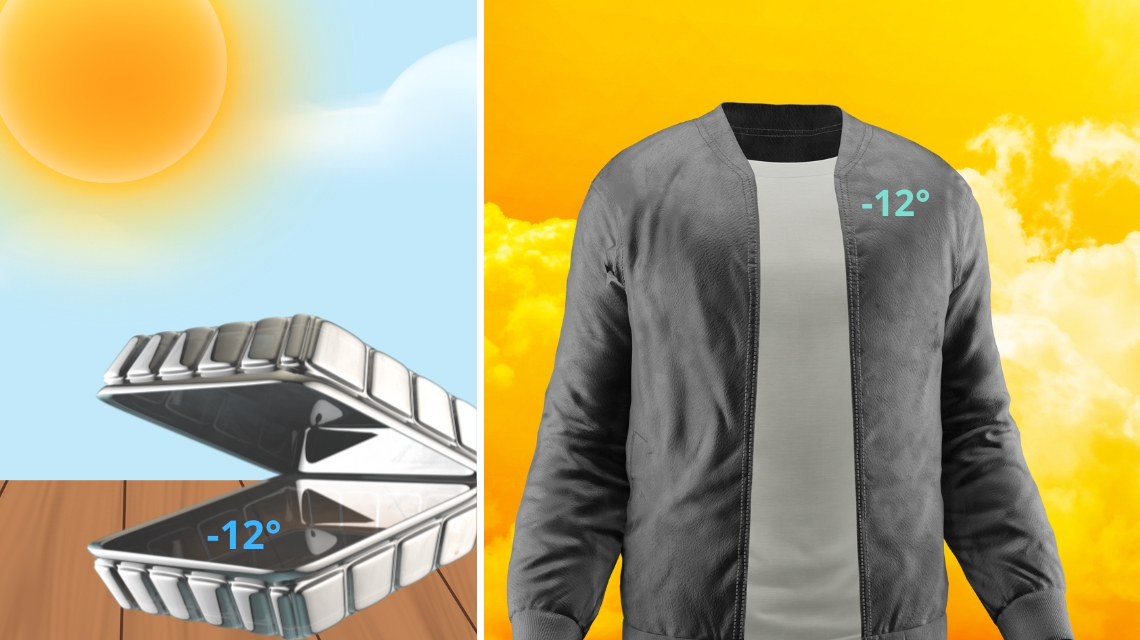Italian National Agency for New Technologies, Energy and Sustainable Economic Development

Energy: How to dissipate heat without release it into the environment
Keeping fabrics and food cool even if the temperature outside is very high and cooling buildings without the use of electric air conditioning and without releasing heat into the surrounding environment can be achieved by an air-insulated metamaterial [1] [2] being studied at ENEA, whose optical properties enable it to reach well 12°C below ambient temperature.
The study leading to these results has been published in Energies and is considered the first in Europe on passive daytime cooling using a photonic approach.
“Our study stems from a question of whether it is practically possible to transfer the heat of an object into outer space without discharging it into the surrounding environment. The positive response we started from comes from a metamaterial we obtained by sputtering [3] which, streamlined in its formulation and adapted to adhesive substrates, could coat large surfaces,” explained Anna Castaldo, author of the first study together with Emilia Gambale, Manuela Ferrara, Michela Lanchi, Giuseppe Vitiello and Michele Zinzi from the Energy Technologies and Renewable Sources Department
Unlike most cooling methods currently in use, like air conditioners requiring electricity and resources to dissipate heat (active methods), radiative cooling is a passive method mimicking the natural process in which the Earth cools itself at night.
“Passive radiative cooling, that is releasing heat from a hot object into the cold universe through an infrared atmospheric window in which the atmosphere is transparent [4], is one of the great scientific challenges of the 21st century, addressed some 50 years ago by researchers such as Silvestrini and Nicolais, since most daily necessities, from power generation to data exchange, generate excess heat,” Castaldo said.
Heat dissipation devices have spectrally selective surfaces and can reach lower temperatures than those of the surrounding air or other objects present. This can occur even during the day under direct solar irradiation when a decrease in their temperature, theoretically as much as 80 degrees C, can be observed.
“I organized a specialized session on Passive Radiative Cooling during the 12th European Optical Society Annual Meeting 2024, which took place in Naples and was attended by notable contemporary scholars in the field, such as Prof. Aaswath Raman and Prof. Luigi Nicolais author, among others, of a pioneering study of now 50 years ago, to whom we owe the first attempts to create a solar refrigerator,” Castaldo concluded.
Notes
[1] Material that exhibits extraordinary electromagnetic properties not found in nature, designed by manipulating its physical structure.
[2] For example, placed in a container filled with krypton, a noble gas occurring in trace amounts in the atmosphere.
[4] Earth's atmosphere normally retains the Earth's heat due to its constituent gases, and it can it be released only through a “window”.
